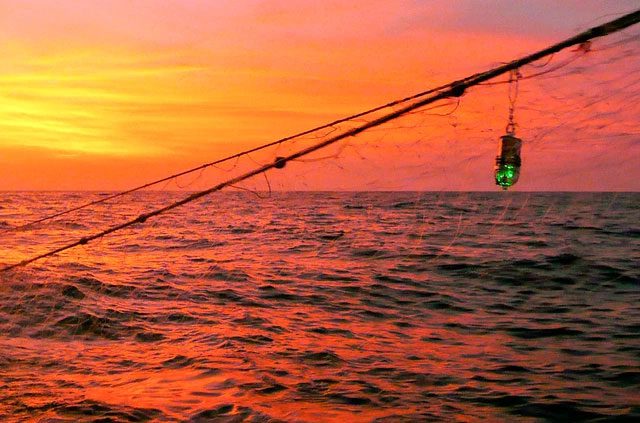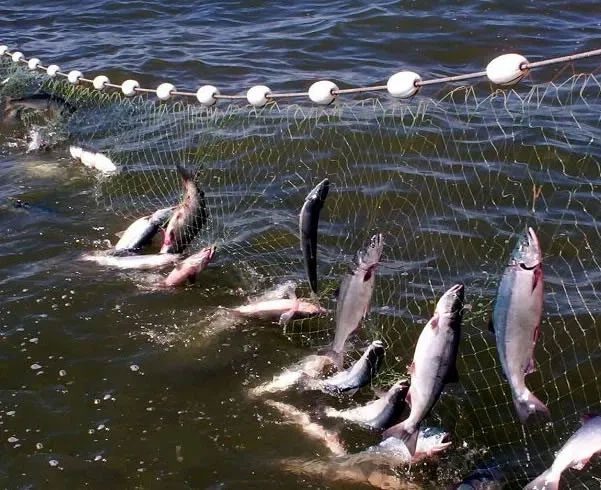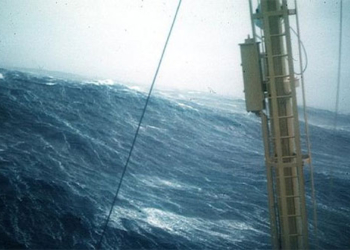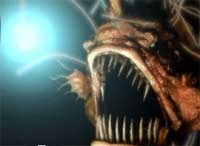For fishermen, a black squid with many tentacles caught in the net is an undesirable issue. For sea turtles or diamond stingrays, getting caught in a net means death. To address the problem of unwanted bycatch, American ecologists have announced a new solution: attaching green light-emitting diode (LED) lights to fishing nets.
According to research, this method significantly reduces the bycatch of unwanted species (such as sharks and squid) without affecting the quality and quantity of commercially valuable seafood.

Green LED lights attached to fishing nets help prevent the catch of turtles, sharks, and squid (Photo: Jesse Senko)
Research shows a reduction in the number of unwanted species caught without negative impacts on overall catch, according to conservation ecologist Rebecca Lewison from San Diego State University, who was not involved in the study.
To catch fish, many coastal fishermen use gillnets, which are suspended on the water’s surface like a net barrier, anchored by floating buoys. These nets can drift for hours or days, indiscriminately catching both target and non-target species; unintended catches are often thrown back into the sea with fatal injuries. This type of fishing significantly contributes to the global decline of species such as dolphins and sea turtles, while also slowing down fishermen’s daily activities.

This type of LED illuminated net allows fishermen to catch as many fish as usual. (Photo: Steelhead Voices)
Previously, marine ecologist John Wang and colleagues at the National Oceanic and Atmospheric Administration (NOAA) in the United States invented illuminated nets to address turtle bycatch. Turtles are particularly good at seeing blue light. Researchers found that illuminated nets reduced the bycatch rate of turtles by 64%. Consequently, they believed that these nets could also benefit other marine animals.
The research team collaborated with small-scale fishermen targeting grouper and flounder off the coast of Baja California (Mexico), an area rich in turtles and other large marine animals, according to conservation ecologist Jesse Senko from Arizona State University, the lead researcher. To implement the study, researchers deployed 28 pairs of nets, with each pair consisting of one net equipped with LED lights. The team then weighed and identified each creature caught in the nets overnight.
According to results published in the journal Current Biology on January 22, the illuminated nets caught 63% fewer fish, 51% fewer turtles, and 81% fewer squid compared to dark nets. The results were “satisfying” especially for elasmobranchs, including sharks and rays, Lewison noted. She stated that shark bycatch is a “big issue” in the Gulf of California. In this new study, the shark bycatch rate decreased by up to 95%.
It might be too simplistic to say that target fish cannot see the light as well as other animals, according to ecologist John Wang. Researchers are still investigating why some species avoid light better than others. They suggest that elasmobranchs have sophisticated vision, while Humboldt squid have large eyes. Therefore, these animals can easily detect green light.
This type of LED illuminated net allows fishermen to continue catching target fish as before but only takes half the time to pull and set the nets. The biggest limitation of this solution is that equipping one net with lights costs up to $140, which is beyond the financial means of some fishermen. Currently, researchers are testing solar-powered lights that have a longer lifespan than battery-operated ones. They are also considering creating similar results in Baja California, fishing grounds in Indonesia, and the Caribbean with fewer lights. In these projects, the needs of the fishermen are crucial. “They are the ones using the nets daily”, Lewison said.





















































